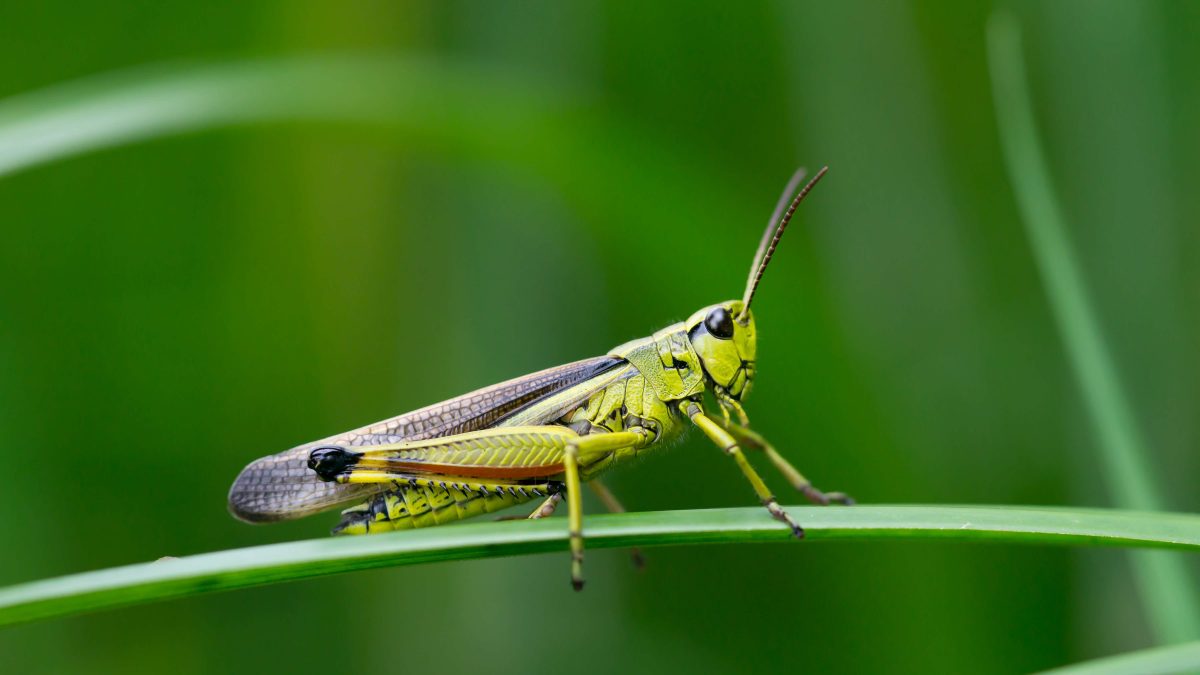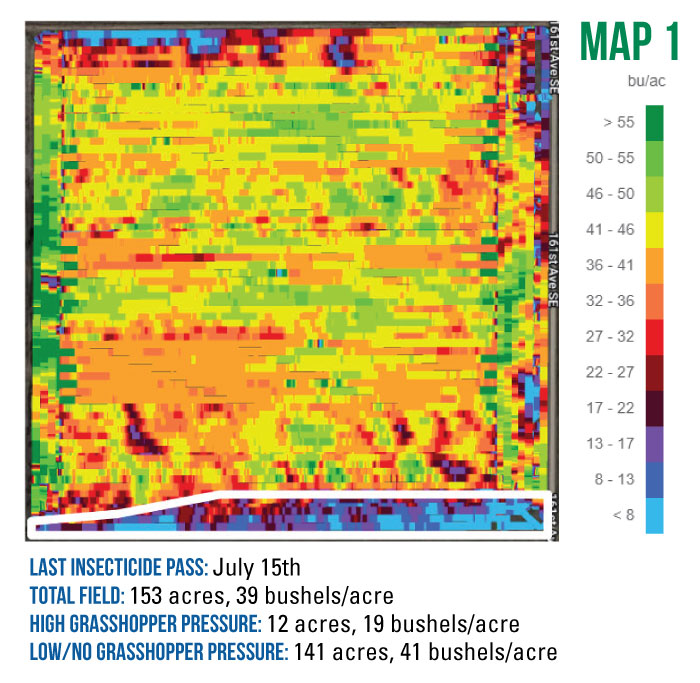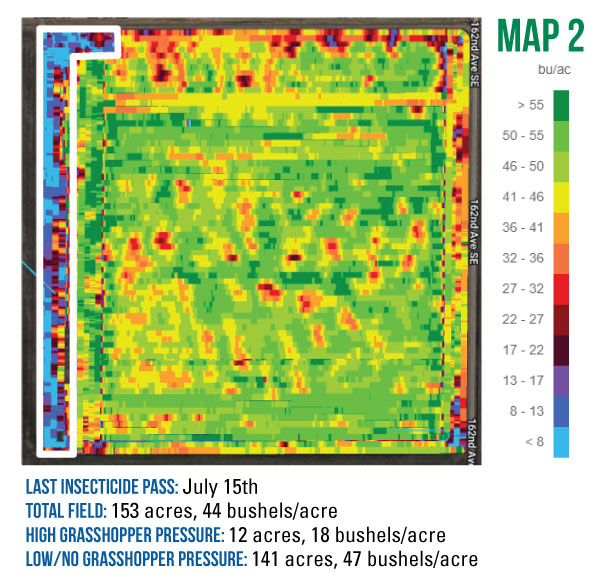“Looking Back, I Wish I Had Taken Pictures!” – How Not to Lose 20+ Bushels an Acre to Grasshoppers

The 2021 growing season opened our eyes to some yield-limiting issues, one of which was grasshoppers pressure in soybeans – and more specifically, grasshoppers coming out of nearby small grain crops.
Lack of moisture opened the door for a large infestation of this pest to take a toll on our crops in ’21. So, while we may become aware of grasshoppers throughout the summer, we should also watch out for these menaces until full soybean maturity.
Let’s set the stage:
Around the Prosper, ND area, most small grains were harvested the first week of August. After that, we found infestations of grasshoppers in all types of crops. The grasshoppers that once called the wheat and barley fields home sought shelter elsewhere. They moved to bordering soybean fields, where they wreaked havoc in the weeks leading up to the soybean harvest.
The hoppers settled into their new home and spent at least four weeks feeding on the developing soybean plants. The first soybeans were combined at the beginning of September, and a hard frost was not recorded until the final days of October.
Across the region, farmers commented that their soybeans had “green stems but dry pods.” While frost contributed to this problem, so did the grasshoppers. The defoliation they caused stunted the growth and development of the crop, lowering the yield potential.
I pulled data from two soybean fields, each about 150 acres, that were bordered by small grains on one end. I’ve included total yield, acres of high grasshopper pressure vs. low/no grasshopper pressure, and corresponding yield averages.


Not surprising, the areas most affected by grasshoppers are field edges, so treatment can be simple. Running two insecticide passes on a field edge later in the season can eliminate the insect.
Early in the growing season, the threshold for spraying grasshoppers is much higher (40% defoliation) than when the pods begin to fill (25% defoliation). Another option for late-season treatment is to gauge the damage and if the grasshoppers are still present, spray when roughly 10% of the pods are damaged. Keep these thresholds in mind for the 2022 harvest.
2021’s weather led to the perfect storm for large populations of grasshoppers to lay eggs and overwinter into 2022. I would expect a similar battle with hoppers again this summer and fall. Being aware of grasshoppers throughout the growing season will allow you to produce a better crop.
If you have questions about grasshoppers, or other factors affecting your yields, contact any of the Peterson Farms Seed team, and we will assist you in any way possible!











